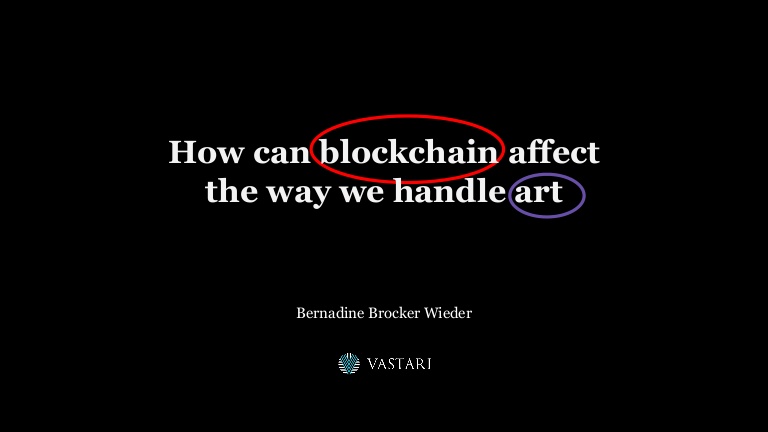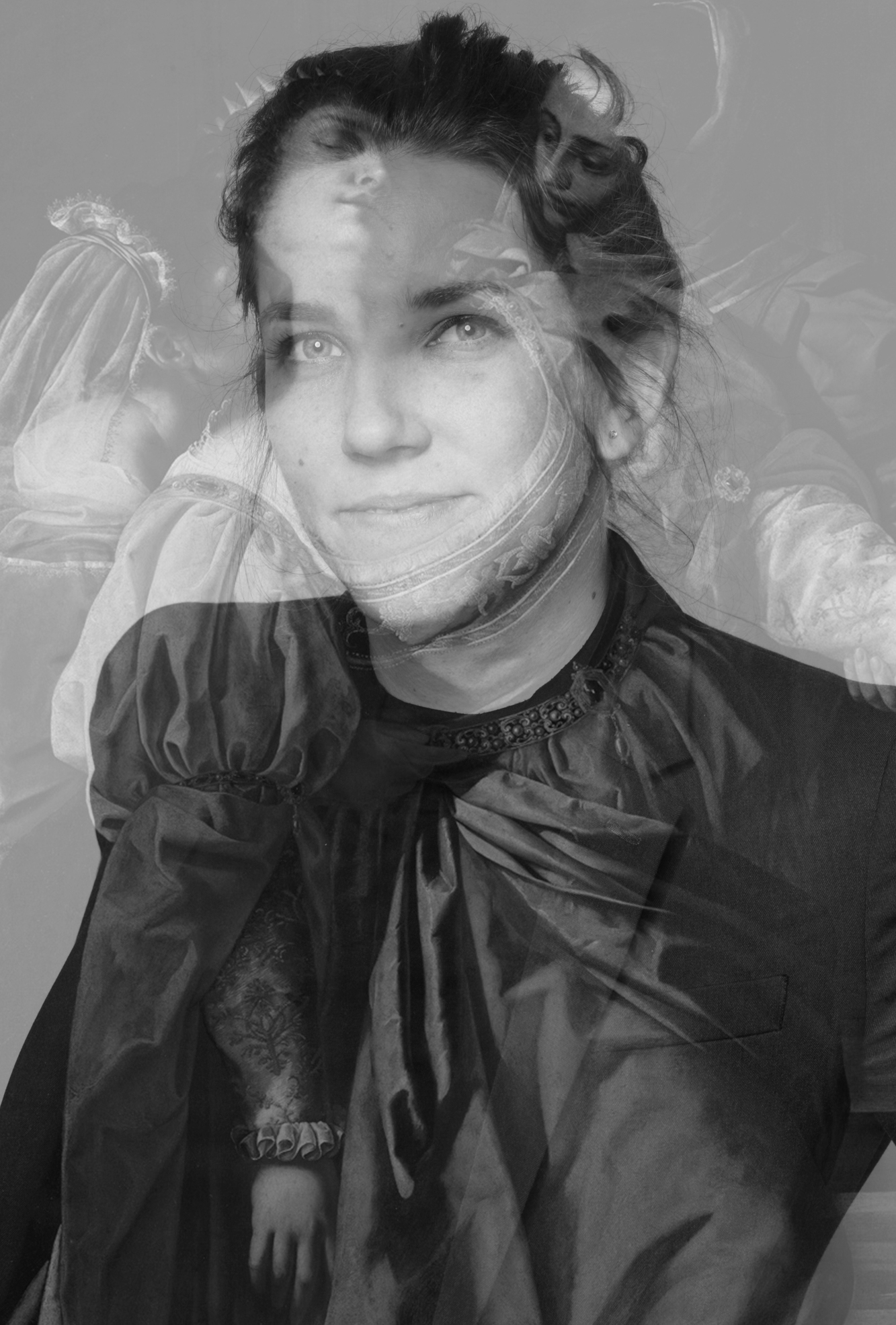
Bernadine Brocker is CEO and Co-Founder of Vastari. She is a huge proponent of technological innovation for the art world. She is also a scholar of art history, a graphic designer and was originally trained as an illustrator.
Could you tell us what your project “Vastari” is about? How did it start and why?
Vastari is an online marketplace platform where venues and museums can find and connect with new and exciting exhibition content. The company was founded as a result of a question from an art collector who wished to lend a drawing to a museum exhibition – but it has now developed into something much larger.
Eight years on, the company now operates a confidential database of private collections available for loans to museums, as well as a matchmaking database for touring exhibitions. The industry of Arts, Culture, Exhibitions and Technology is very siloed and so we have been shining a light on many different collaboration opportunities and questions that couldn’t have been answered before. For example, how big is the market for exhibitions? What are participants looking for in a partnership? What kind of budgets are participants looking to spend? How can technology tools improve offerings? More recently, since 2018 we have started publishing reports about our industry, sharing insights to how the exhibitions industry works in 2018 and reports on collecting in 2020, answering exactly those questions.
Vastari’s primary aim is to know what museums and venues want, and connect them to the most relevant artworks or exhibitions that relate to their programming. Exhibitions we tour cover subjects from Toulouse Lautrec to the centenary of the Greek Revolution of 1921 to the undervalued masterpieces by female abstract expressionist Michael West, from music to silence – and our private collections range from the most contemporary masters like Hockney and Wiley to classics like Rubens and Goya.
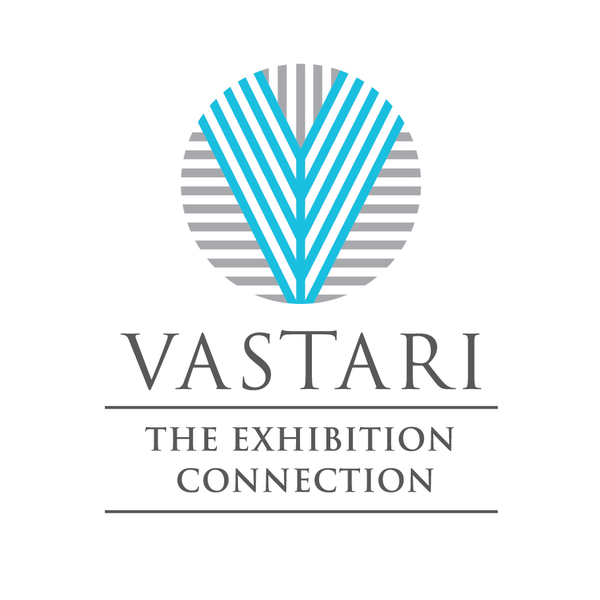
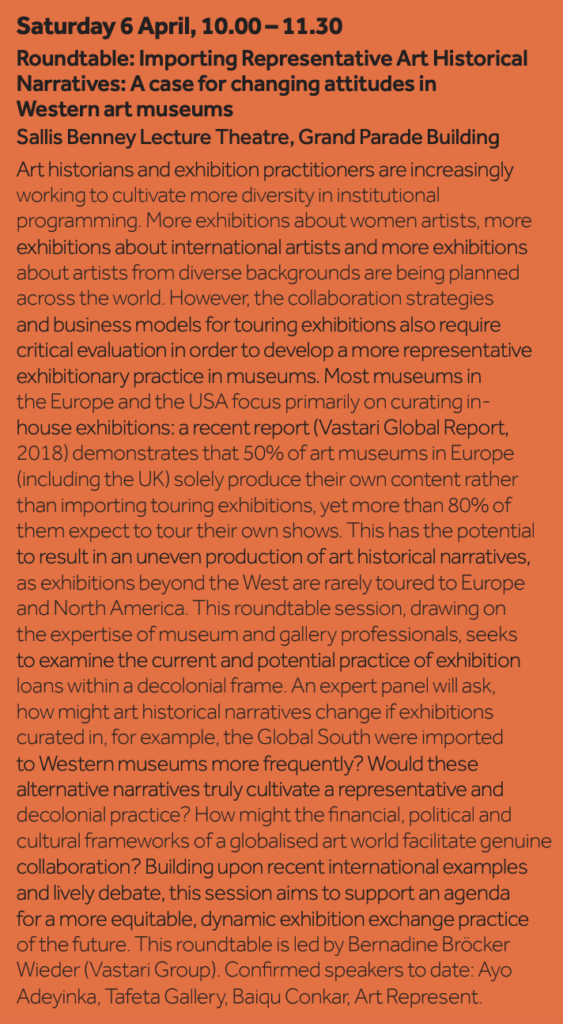
I was very intrigued by your comment on how museums are more inclined to export than import and you made a very interesting connection with post-colonialism. If museums are more interested in sending out their ideas and not bringing them in, what can we do to change it?
When we surveyed the sector in 2018, we asked museums if they are willing to import exhibitions (host) or export exhibitions (tour). Our survey was primarily of museums in the “West” like Europe (50.4%) and North America (42.8%), but also included 6.8% of respondent institutions from other areas of the world.
What stood out to us was that museums in Europe especially expect to export their exhibitions to other venues, but they do not expect to host or import any exhibitions – even more prominent within art museums. North American museums are 30% more likely to import shows than their European counterparts. 50% of European museums are not willing to import exhibitions “turn-key” meaning they always insist on changing the show for their own venue.
These findings indicate, in my opinion, that these institutions have a culture where they “know best”. This is not an inclusive attitude and is reminiscent of 19th century world views. These institutions do not allocate a budget for importing exhibitions to their venues, in the way they expect their counterparts to do.
In 2019, I organized a panel discussion at the Association of Art History Conference in Brighton, UK to discuss this finding, and it really struck a chord with the audience – many museum professionals, especially from minorities, found that this subject is something that needs more attention. In short, I think it is about appreciating others’ expertise and identifying inequity in business models.
You have mentioned curators at big institutions are hired for their address book. A curator’s role should be how to tell the story, not how connected they are. How does a digital platform make it easier for curators to focus on what really matters?
Today, a lot of connections are made through informal relationships. Our Vastari Global Collector Trends report demonstrated that most collectors are introduced to museums for loans to exhibitions through “friends” and other informal relationships, compared to online networks or professional networks.
I personally am of the belief, like you, that the curator’s role should be about how they tell the story, rather than their address book. But unfortunately, if we are still experiencing a reality where informal relationships are the primary way to find content, it means that curators will continue to be hired for who they know. I wonder how much curators want it to remain this way, or also find it frustrating to spend their time schmoozing rather than philosophizing and writing.
A digital platform like ours can help ask the question and provide an alternative – but it’s up to the industry to find the answer.
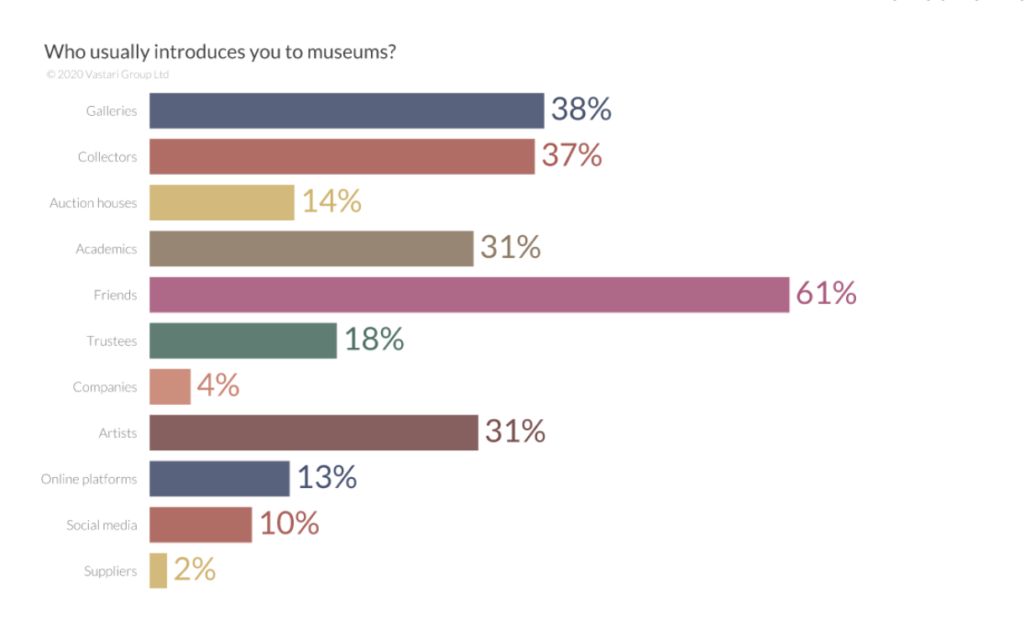

I remember you mentioning how in Dominican Republic you never had access to great museums and that when you first saw the german expressionists you felt incredibly moved. I remember a similar experience when I first went to MoMa. While I don’t expect to see an Otto Dix painting in Santo Domingo, I think the local culture is rich enough to produce more socially valuable exhibitions. Do you agree?
I like this question. For example, the Centro Leon in Santiago, Dominican Republic produced a fantastic exhibition about Oscar de la Renta, one of the most famous fashion designers from the island. As an example, I expect that the V&A would want to curate their own exhibition on the designer, rather than importing the one from D.R., even if the institution would expect Dominican museums and venues to import their exhibitions about British fashion designers like Alexander McQueen.
This question also raises the point of asking to whom all of these cultural stories and experiences belong. The British Museum produces an experience about Japanese Shunga, the MoMa holds works about German Expressionism, the POLA Museum in Japan holds works by Claude Monet… Can we agree that Culture is collectively owned by humankind, that extraordinary stories that belong to everyone?
You could argue that instead of looking at the ownership of the artefacts, the institutions “own” the scholarship, the expertise. When a lot of researchers and curators at museums are losing their jobs as a result of the 2020 pandemic – is their scholarship owned by them individually, or by the institution they worked for? Can they go off and develop exhibitions elsewhere, and how does this relate to the ownership of the collections?
Bearing all of these factors in mind, the argument for custodianship, equity, and representation becomes very complex. That is why there is a fine balance within our industry that is often not even put into words. It is a fascinating space to build technology for. At Vastari we are attempting to define in binaries something which is not black and white.
How can digital assets and blockchain technology change the art industry? What is the art industry of the future?
I actually want to evolve how we talk about the “art industry” going forward. It could be defined with the acronym ACET – Arts, Culture, Exhibitions and Technology – and acknowledge the direction that the art industry is heading towards. Redefining this corner of the media and education space helps us understand the potential of the future of our work.
Alliances will need to be made between the traditional arts & culture institutions and technology companies, as well as exhibition producers, to find new business models and collaborations. If you look at organizations like Superblue, Diversion Cinema, Khora Contemporary and ARTTECHHOUSE, or suppliers like Articheck, Conserv, and Artratio, and of course organizations like Artory, Verisart, Superrare, Rarible, Electric Artefacts and Dot Art…. the industry is much larger than what was collected under the “arts and culture” umbrella.
The future of the ACET industry is redefining value – and going back to the roots of our creativity. These creations are made to be appreciated by as wide as an audience as possible, while still creating a personalized experience. So far, the personalized experience has been reserved for a chosen few – those who can buy at an art fair or afford to be a patron of a museum. Blockchain and distributed ledger technology, mobile technologies, XR technology and all of the wonders of Web 3.0 can redefine the personalized experience to be more inclusive and significant. A great series of examples were discussed by The Lab organized by We Are Museums last week – and this is only the beginning. If you ask me, this is a time for ACET growth.
